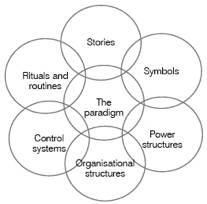Home » BLOG » Business Development » Differentiation: Developing the right approach for you
Differentiation: Developing the right approach for you
Published in Managing Partner Magazine
The strategic approach that you adopt for your firm is unlikely to provide a complete solution to the differentiation challenges that you face. This is because you will have to decide a practical path that reconciles your strategic theory with the reality of your firm and all of its idiosyncrasies, personalities, politics and taken-for-granted assumptions about the way that it operates.
I often term this ‘the art of acceptable compromise’: retaining the strategic objectives, but being flexible about how, over what timescales and in what way they are achieved. This is less a prescriptive approach and more an enabling one.
I suggest that there are three components that need to be considered in developing the right approach to differentiating your business:
1. The culture of your firm;
2. Its core competencies;
3. The commitment that will be required to effect the changes that will be needed to get you from where you are now to where you want to be.
Commitment has many facets, but, in my experience, the two most important for a professional services firm are leadership and a collective will.
To gain competitive advantage, the key is to find the best fit between culture and competencies on the one hand and opportunities, clients and competitors on the other. However, the door will only be unlocked when the required commitment is in place to make the necessary shift in position. This shift will almost always be difficult and will mean everybody, to a greater or lesser degree, operating outside of his or her comfort zone.
The cultural web: How things really happen around here
The cultural web is a model that I find very useful in distilling the key issues that any organisation – especially professional services – faces (see figure one). It’s a model that was proposed by Kevan Scholes and Gerry Johnson in their book Exploring Corporate Strategy (FT Prentice Hall, August 2003).
In broad terms, the things in the bottom three circles comprise the things that management like: control, structure and systems. They are tangible and can easily be put in place and measured. This is macho-management stuff – the meat and potatoes of business schools. We can differentiate here, but we can also be easily copied.
The content of the upper three circles is much trickier for management. These are the intangibles, the cultural things. Arguably, these are the things that actually drive the business. Often the issue is not what the rules are; it is more about the stories and legends surrounding how these rules work in practice and the behaviours displayed by the heroes and villains. These are the behaviours and values that are perceived to be actually rewarded and punished by the organisation. They send much more powerful messages to staff than glossy brochures and internal-communications programmes about what the firm holds dear. If the behaviour that is rewarded, or perhaps that which goes unpunished, is at odds with the espoused values or rules of the business, then management has a serious problem to address. The upper three circles represent the ‘people stuff’ that many professional firms find most difficult to deal with and yet in which lies the source of real differentiation and competitive advantage.
Of course, right in the middle is the product of these interplays. In management speak, this is the business paradigm. In plain English, it is ‘the way things actually happen around here’. It is also something that is very difficult for competitors to imitate. This is what is unique about your firm, whether for good or bad. The challenge is managing these interactions so that they add value to client relationships rather than detract from them.
My message is simple. The temptation for management faced with the need to implement serious strategic change is to focus on the structural changes that will need to be made and to ensure that delivery processes and procedures are in place. This simply will not work unless collateral changes are made to the culture of the firm. To ignore this is to destine any business strategy to ultimate failure.
Behavioural change is very difficult. At an intellectual level, partners will understand what is required and why the changes are important for the future health of the firm, but for many, the psychological pain of making the change will be greater than the pain of staying where they are. Consequently, they will resist change at an emotional level. What often happens is behaviour that I term ‘strategic non-compliance’. Very rarely will partners in a firm actively sabotage the management but by their inactivity, by the things that they don’t do and by the example that they don’t set, they just as surely condemn the change process to failure. They have learnt to ignore and to keep their heads below the parapet until the latest management fad passes. They represent the most serious hindrance to strategic change and mean that huge inertia has to be overcome for the firm to make real progress.
Would you rather be loved by your profession or by your clients?
At the heart of differentiation is the concept of being different in a way that adds value to a client and which is economically viable for the firm. Within professional services, some of the key inhibitors to being ‘different’ are the strong cultural drivers that bind together members of any profession. The vast majority of professionals consider it more important to be highly regarded by their professional peers than by their clients. They want to be seen to perform highly on the criteria that their profession holds dear rather than those that are of most importance and relevance to their clients.
Figure two is a simplified extract from some research that I carried out with a very large firm of commercial architects around ten years ago. It considers key performance criteria and tracks the opinions of three groups: existing clients of the firm, a target group of clients and the views of the people within the business itself.
The interesting aspect of the research was the extent to which the views of clients and targets were at variance with the views of the architects in a few key areas.
For example, consider the importance of ‘innovative design flair’ across the three sample groups. This is an area of core professional competency that architects hold dear – it is their raison d’être, what God put them on the earth to do. It became clear from the research, however, that to many commercial clients, innovation is synonymous with increased costs, untried construction techniques, a higher incidence of PI claims and ‘art for art’s sake’, at their expense. Unsurprisingly, the commercial clients’ key criteria are more grounded in pragmatics – with a veneer of modernity applied to the outside of the building if you don’t mind please. For these clients, specific experience and track record is of much more importance than to the architect.
Typically the view of the professional is dismissive: “After all,” I was told in my research, “a building is a building.” Similarly, I have frequently been told by lawyers at all levels of the profession that sectoral understanding isn’t important because “the law is the law and the sector isn’t important”. Whether or not these statements are true is largely irrelevant; what is hugely important is that this isn’t how the client sees it.
For those tasked with bringing about strategic change, the message is self-evident: you need to understand the culture that you are dealing with and how to use its deeply held beliefs to your advantage. This is an on-going challenge and even with a focused recruitment strategy, it is likely that new joiners will arrive with beliefs that will need to be managed into line with the values of the firm. It is all too easy to underestimate the resistance that you may encounter to making change happen, regardless of the academic case you may be able to present.
Competencies
In a differentiation strategy, competency needs to be appreciated in a wider context than simple core professional skills. Indeed, professional competency is very rarely a source of competitive differentiation; it is de minimis – necessary but not sufficient. Other competencies are needed to build a distinctive and appealing position. Some of these you will already have, delivered by your culture or by your current systems. Others will need to be developed through people or hard-process change management. Competencies may be vested in individuals or in the organisation as a whole.
For individual competencies to be a source of effective differentiation, it is almost certain that they will be evident (whether by an accident of history, the evolution of the business or through more proactive measures such as selective recruitment or training) among a significant number of people in the firm. They need to become part of the fabric of the business if they are to be a recognisable and resilient part of the brand proposition.

Figure one: The cultural web
Johnson and Scholes, Exploring Corporate Strategy
Competencies outside the core professional skills can be considered very broadly. In so doing, it is easy to appreciate why they are the things that differentiate between those firms, or individuals, that have the technical ability to potentially do the job and the person/ business that is chosen to actually do it. Such competencies include things like:
· Empathy and understanding of a client’s business situation;
· The ability to work as a team;
· Open, clear and frequent communication as part of the way in which the business operates;
· Project and business-management skills;
· Integrated IT solutions;
· Business-process models to improve efficiency and effectiveness;
· Entrepreneurship in mind and action;
· Commercial awareness and judgement;
· The ability to view their services in a wider context, as a method by which business objectives are achieved and not as an academic pursuit;
· Interpersonal skills within teams and between teams and the ability to build long-term relationships;
· Powers or persuasion and influencing skills;
· The delivery of client training and development services.
This is a simple and short list. To be an academically excellent professional does not necessarily require any of these competencies, but to run a successful professional firm requires that people share many of them.
To add a further layer of complexity, different clients place varying weights of importance on the component parts of the competency mix. Homogeneity is often found in sector groups, which is one reason why this approach to market segmentation is attractive from a business perspective.
These competencies, ways of working, approaches and attitudes come together to form the organisation’s brand. For me, brand is ‘what you get when you buy my firm’ in a way that is different, better and more valuable than when you buy from other firms.
In most professional firms, a key strategic issue is how to embed brand in the organisation rather than it simply being an individual client’s experiences with the partners with whom they have contact.
Opportunity fit versus competency stretch
We are moving to a world where the matrix is king, flexibility is paramount and speed is key to success. We need to structure ourselves to encourage this sort of behaviour and we need to be seen to reward it.
Many strategy models talk about fitting your organisation with the current and emerging opportunities in the market. In the commercial world of course, this is often realised through M&A programmes – the divestment of non-core businesses and investments to build a strong strategic position. This is not quite so easy in professional firms where a number of the ‘non-core businesses’ may well be people who own a large part of the firm. Here, the change process will necessarily take much longer.

Figure two: Key performance criteria
Perhaps a better approach is to look for the best fit between competitive opportunities and existing (or easy reach) competencies. In this way, you find the best position between environment fit and competency stretch for your firm.
This can be applied at the very top line of strategy and equally well at the operational level. A willingness to manage, both actively and objectively, the competency profile of your firm will ensure a better fit with your desired clients and so a stronger competitive position.
Of course, this also means putting in place the structural changes necessary to support your strategy. Ultimately though, competencies are a central source of competitive advantage. By looking at the interplay of clients and competitors with the competencies and resources of your own firm, you are in a good position to identify differentiators that are determinant rather than just different.
The objective is to find a position for your firm, practice area or work product, which is different in a way that adds value, is defensible and can be clearly communicated.
Brand dissonance
The other question that needs to be addressed in any successful differentiation strategy is how to avoid dissonance within the overall ‘brand umbrella’. How do we achieve a layered approach to differentiation in which individual practice areas and products can build their own distinctive position within the overall brand offered by the firm?
Many of these issues can be resolved by pursuing a strategy-development process that is simultaneously both top-down and bottom-up, with the interface being the point at which these nitty-gritty issues are resolved. This is the boundary where ‘corporate strategy’ and all those macro-differentiators tied up with brand (or the ‘what you get when you buy us’ proposition) meets the micro-factors embodied in individual practice groups, legal products or individual personalities.
It’s about recipes not ingredients
So what really makes a difference in trying to develop a strongly differentiated position?
At the end of the day, any competent manager should be able to recite the things that need to be done in order to develop and implement a strategy.
What we all know, however, is that the problem lies not in defining what it is we wish to do but much more in how we will actually go about doing it.
In terms of defining a basis for differentiation that is achievable, value adding and defensible, no one thing will make the difference. Equally, doing a whole host of ‘good stuff’ won’t necessarily be the panacea either. It’s much more important to be concerned with recipes rather than ingredients, where the real secret is in the interaction of all the different factors, which together make the difference.
I would like to finish this series with my overall theme: you don’t have to be perfect, just discernibly better than your competitors at the things that matter most to your clients.
It’s not a lengthy message, but a firm that can achieve this is in a very strong position. Such a journey will require tenacity, resilience and vision; it will take time, require boundless enthusiasm and mental toughness, but the rewards for your business will make the climb worthwhile.
Search
Categories
Recent Posts
- Fighting fit
- The Challenges Of Leadership Are Different To The Challenges Of Management
- The Cultural Dimensions Of Leveraging Institutional Knowledge
- A knowledge-led approach to business development is key to law firm resilience
- Team Morale Is Directly Linked To The Ability To Deliver Differentiated Client Services
